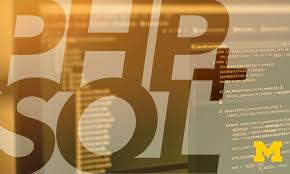Course Help Document
Welcome to the “Building Database Applications in PHP” course! This document provides you with all the necessary information, resources, and guidelines to successfully navigate and complete the course.
Table of Contents
- Course Overview
- Course Objectives
- Course Outline
- Course Materials
- Assessments and Certification
- Prerequisites
- Course Policies
- Additional Resources
- Contact Information
1. Course Overview
“Building Database Applications in PHP” is a practical, hands-on course designed to teach students how to develop robust and efficient database-driven web applications using PHP. This course covers essential concepts in database design, SQL, and PHP integration, enabling students to create dynamic, data-driven websites and applications.
2. Course Objectives
By the end of this course, you will be able to:
- Understand the fundamentals of relational databases and SQL.
- Design and implement efficient database schemas.
- Connect PHP applications to databases using MySQL and PDO.
- Perform CRUD operations using PHP and SQL.
- Implement advanced querying techniques.
- Secure database applications against common vulnerabilities.
- Optimize database performance for scalable applications.
3. Course Outline
Module 1: Introduction to Databases and SQL
- Overview of relational databases
- Understanding tables, records, and fields
- Introduction to SQL
- Setting up a MySQL database
- Basic SQL operations: SELECT, INSERT, UPDATE, DELETE
Module 2: PHP and MySQL Integration
- Setting up a PHP development environment
- Connecting PHP to MySQL using MySQLi and PDO
- Executing SQL queries from PHP
- Handling query results
- Error handling and debugging
Module 3: Designing Database Schemas
- Principles of database design
- Normalization and denormalization
- Creating and managing tables
- Defining primary keys and foreign keys
- Indexing for performance
Module 4: CRUD Operations in PHP
- Creating records with PHP and SQL
- Reading data from the database
- Updating existing records
- Deleting records safely
- Building a simple CRUD application
Module 5: Advanced Querying Techniques
- Complex SQL queries (JOINs, subqueries, unions)
- Aggregate functions (COUNT, SUM, AVG, MAX, MIN)
- Grouping and filtering data
- Using prepared statements
- Pagination techniques
Module 6: Security in Database Applications
- Understanding SQL injection
- Preventing SQL injection with prepared statements and parameterized queries
- Implementing user authentication and authorization
- Data validation and sanitization
- Secure session management
Module 7: Working with Data in PHP
- Handling form data and user input
- File uploads and handling binary data
- Working with JSON and XML
- Exporting and importing data (CSV, Excel)
- Generating dynamic reports
Module 8: Optimizing Database Performance
- Analyzing and optimizing queries
- Using indexes effectively
- Database caching strategies
- Optimizing PHP code for database interactions
- Monitoring and troubleshooting database performance
Module 9: Advanced Features and Tools
- Using transactions for data integrity
- Implementing stored procedures and triggers
- Managing database migrations
- Introduction to database management tools (phpMyAdmin, Adminer)
- Integrating third-party libraries and APIs
Module 10: Final Project
- Planning and designing a database-driven application
- Implementing core features and functionalities
- Ensuring security and performance optimization
- Testing and debugging the application
- Deploying the application to a production environment
4. Course Materials
Recommended Textbooks:
- “PHP & MySQL: Novice to Ninja” by Kevin Yank
- “Learning PHP, MySQL & JavaScript” by Robin Nixon
Online Resources:
- PHP official documentation: php.net
- MySQL official documentation: dev.mysql.com
- W3Schools SQL Tutorial: w3schools.com/sql/
- Stack Overflow for community support: stackoverflow.com
5. Assessments and Certification
- Quizzes and Assignments: Quizzes and assignments are provided after each module to reinforce learning and ensure comprehension of the material.
- Mid-term Project: A project focusing on specific database features covered in the first half of the course.
- Final Project: Develop a complete database-driven PHP application. This project will be assessed based on the application of database principles, functionality, and code quality.
- Certification: Certificates will be awarded upon successful completion of the course, including all quizzes, assignments, and the final project.
6. Prerequisites
- Basic understanding of PHP and web development
- Familiarity with HTML and CSS
- Basic programming concepts (recommended)
7. Course Policies
- Attendance: Regular attendance and participation in all modules and activities are essential for successful course completion.
- Assignments: All assignments must be submitted by the specified deadlines. Late submissions may incur penalties.
- Academic Integrity: All students are expected to adhere to principles of academic honesty. Plagiarism or cheating will result in disciplinary action.
8. Additional Resources
- PHP Official Documentation: php.net
- MySQL Official Documentation: dev.mysql.com
- Stack Overflow: Community-driven Q&A for programming
- GitHub: Host your projects and collaborate with others
9. Contact Information
If you have any questions or need further assistance, please contact:
- Instructor: [Instructor’s Name]
- Email: [Instructor’s Email]
- Office Hours: [Instructor’s Office Hours]
